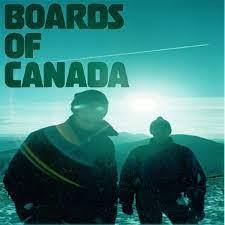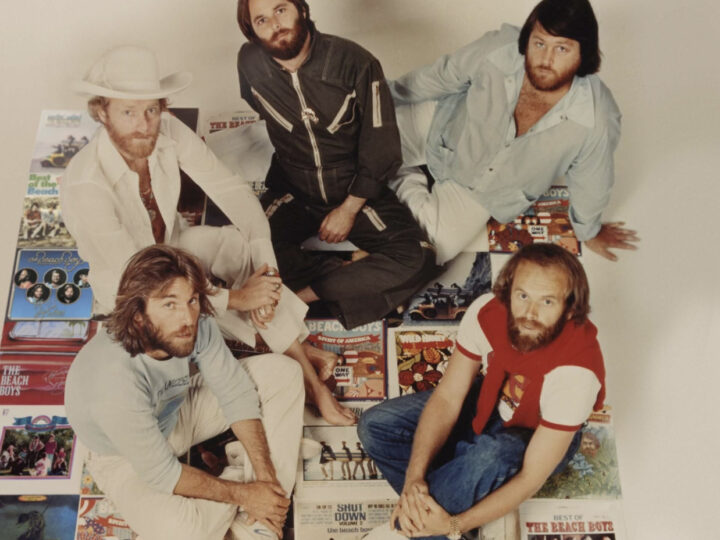
Music has the Right to Children
Even since Luigi Russolo bent his avant-garde ear to trains and bombs and automobiles, declaring the arrival of a new “art of noises,” the music of machines has been the site for future shock. As the British critic Kodwo Eshun argues in his book More Brilliant Than the Sun, today’s samplers, synths, and drum machines breed sonic science fictions, rippling portents of the technocultural tsunami to come: high-speed, recombinant, and thoroughly posthuman.
At the same time, a deep strain of nostalgia runs through electronic music, a wistful melancholy often bound up, in strange, indeterminate ways, with childhood and nature — in other words, with loss. Electronic music often makes melodies of these moods, brief haunting phrases that float above whatever beats might happen to be percolating about. Eno was a light-handed master of these naive melodies, which he partly copped from the German electronic duo Cluster, and which eventually evaporated into the more diffuse and depersonalized moods of his ambient work. And though we now remember Kraftwerk as the white-smocked Doktors of proto-techno beats, the German act’s records are suffused with a dorky sadness, as if they glimpsed the human world receding in their rearview mirrors, and could do nothing but muster forth a few android swan-songs.
Music Has The Right to Children, the debut album from the Scottish electronic duo Boards of Canada, is as sweet a work of electronic melancholia as you are likely to hear, proof positive, as any were still necessary, that all those knobs and gadgets can indeed capture complex emotional hues. Though its pensive, Moogy tunes often recall Aphex Twin’s classic Selected Ambient Works 85-92, the album’s sensibility, and particularly its beats, owes more to Autechre, who helps run the underground Skam label that released BoC’s earliest vinyl. Like Autechre, BoC build upon the standard strategy of layering lonesome phrases over repetitive rhythms by adding textured twists and turns to the beats. On cuts like “Telephasic Workshop” and “An Eagle in Your Mind,” they chop up bits of human speech, most notably kids voices, to create rhythms that sound like stuttering memories. But the real strength of the album is its melodies, its warbling spaceflutes, polar plaints, and electro wolf howls. Many of these cuts seem almost engineered to stir up a lingering sense of loss — for one thing, they don’t last long enough to satisfy, and many end with gorgeous new movements just beginning to develop.
The album opens with one of these haunting analog wobbles, a Space 1999– worthy drift called “Wildlife Analysis.” The title is a clue: BoC take their name from the National Filmboard of Canada, whose grainy nature documentaries and even grainier soundtracks influenced Michael Sandison and Marcus Eoin when they were tykes in the 1970s. There are lots of cryptic bits surrounding the Boards of Canada, but this nature doc fixation is worth a second look. On the one hand, whatever washed-out TV memories haunt the duo’s brains allow them to indulge the same nostalgia that motivates the Super-8 home movies they show during their occasional live gigs. You can catch this vibe from the photograph that graces the cover of Music Has the Right to Children: a group of literally faceless adults and kids, dressed in horizontally striped Ts and extremely flared jeans, posing for a snapshot now scratched and bathed in turquoise like the deep end of the pool.
But BoC are also tuning into something specific about the 1970s, when the synthesized sounds that started to appear in popular media — educational films and public service announcements as well as prog rock and SF movies — became charged with some of decade’s downbeat emotions. The ’70s were sad the way vocoders are sad. Even the goofy Parisians in Air know this, which is why their retro fluff still resonates. In particular, the ’70s was the decade when space age longings collided with ecological gloom, and if you don’t know what I am talking about, just dig up “After the Gold Rush” or pop Silent Running into your VCR. Nature became an object of mourning, of a TV Indian’s tear, and the canned soundtracks of the documentaries that little Mike and Marcus watched became unconscious sonic symbols of humanity’s technological alienation from this, our only green world.
I don’t know what their ecopolitics are like, but unlike the vast majority of electronica producers, Sandison and Eoin are not urban folks. They inhabit some vaguely communal set-up in the Scottish sticks, and from the occasional interview, it’s clear that their idea of a good time is cavorting bemushroomed beneath a planting moon. I suspect BoC’s rural imagination lends their music some of its visionary isolation, as well as explaining why so many tracks are covered with the greasy fingerprints of noise, warble, and hiss. In our high-tech world, signal degradation and analog fuzz expresses the organic because the organic always decays. It is how machines remember their roots.




